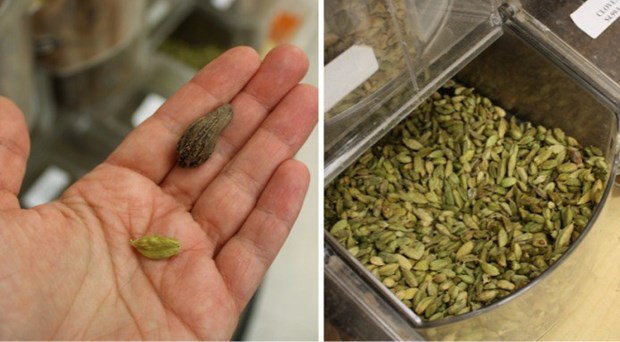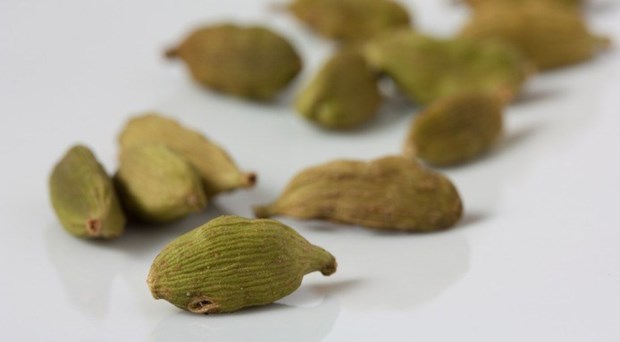Prized for its aroma, cardamom is one of the most expensive spices in the world (third after saffron and vanilla). Its scent is a cross between mint and eucalyptus, a quality that distinguishes cardamom among the rest.
Known
as the Queen of Spices, cardamom is to Indians what vanilla is to the West,
according to Madhur Jaffrey, author of Spice Kitchen: Fifty Recipes Introducing
Indian Spices. Join Fine Dining Lovers as we discover everything you ever
wanted to know about this exotic spice.
Cardamom: History
Native
to India, cardamom is believed to be as old as civilization. It originated in
the rainforests of Southern India, where it grew wild. It is cultivated in an
area known as the Cardamom Hills but is also produced in other countries,
namely Sri Lanka and Guatemala.
It's
botanical name is Amomum Cardamomum and it is a member of the ginger family.
Along with cinnamon and black pepper, it was a principal spice imported by the
Roman Empire. Ancient Romans, Egyptians and Greeks used it as a tooth cleaner
and breath freshener.
In
the East, cardamom has been used in cooking and medicine for millennia. In
Indian and Chinese traditional medicine, cardamom has been used to treat
everything from heart conditions to respiratory disease, stomach troubles and
bad breath.

Photo courtesy of La Catholique/Flickr
Varieties of Cardamom
Whole
cardamom comes in pods that contain small dark sticky seeds. There are two main
varieties: green and brown (also known as black cardamom).
Green
cardamom is considered more delicate and aromatic. Indian green cardamom is the
most aromatic variety produced. Brown
cardamom tends to have a more bitter and smoky flavor, hence they are cheaper
than the green varietal. It is also possible to find white pods of cardamom,
which have been bleached and are of inferior quality.
Uses for Cardamom
In
India, this aromatic spice permeates sweet and savory dishes alike. Both the
husk and seeds are used in cooking.
Cardamom perfumes nearly every dessert, giving Indian sweets that
distinguishable taste.
Cardamom
was a favorite spice of the Mughal emperors who conquered India centuries ago
and used cardamom for sauces, meat dishes and rice. It is essential in making
masala chai, a type of spiced black tea with milk. Cardamom is one of many
spices used in the famous garam masala spice mix.
Outside
of its native India, cardamom is primarily used in Arab, Iranian, North African
and Scandinavian cuisines. Arab nations used it to flavor coffee, as do some
North African countries like Ethiopia. In Morocco, it is a key ingredient in
the ras-el-hanout spice mix. Cardamom is
used liberally in baked goods across Finland and Sweden, and even Germany.

Photo courtesy of Vegan Baker/Flickr
How to Buy Cardamom
The
best way of buying cardamom is to buy whole pods and grind them as needed. Look
for pods that have an oval shape and a paper-like shell. Look for pods that are
a lime green in color and have not been opened. Avoid white cardamom.
If
buying ground cardamom be aware that the volatile compounds are drastically
reduced once they have been exposed to the air. Ground cardamom won't be as
potent as buying whole cardamom but will do in pinch.
Storing Cardamom
As
with all spices, store whole or ground cardamom in an airtight container and
keep in a dark cupboard.
Cardamom Health
Benefits
For
millennia, green cardamom has been used in Indian Ayurvedic medicine and
traditional Chinese medicine in treating a host of diseases. The essential oils
in cardamom are used to treat gum disease and toothaches. Cardamom also acts as
a digestive aid and breath freshener. Other uses include treating sore throats,
respiratory troubles and inflamed eyelids, according to the book Masale by the
Navdanya organization.
By FDL